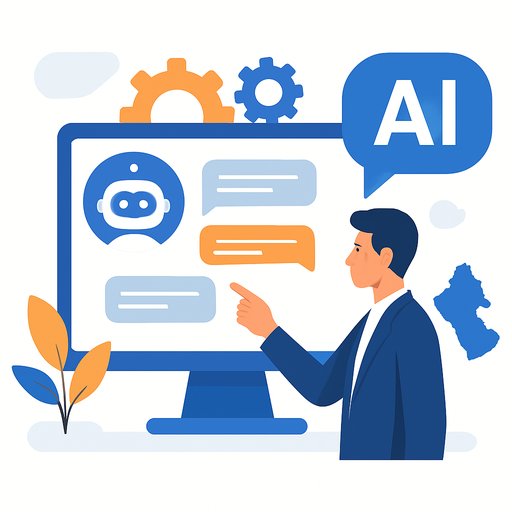AI Automation For Customer Support: Faster Replies, Lower Costs, Happier Customers
Customers expect instant answers. Most teams can't scale headcount fast enough to meet that demand.
AI fills the gap. It automates the repetitive work-sorting tickets, answering FAQs, summarising threads-so agents can focus on complex issues that need empathy and expertise.
Why Customer Support Needs Automation
Studies show more than 80% of customers expect a reply within an hour. Few brands deliver on that consistently, which leads to missed leads, lower satisfaction, and churn. Industry reports keep pointing to the same thing: speed wins.
Automation makes 24/7 coverage affordable. AI handles password resets, order updates, appointment changes, and status checks at scale-without hiring sprees.
In emerging markets like Africa and Asia, automation helps lean teams support larger customer bases and meet global standards without heavy call-centre infrastructure.
How Support Automation Works (In Plain Terms)
- Intent detection and smart routing: Send each ticket to the right queue or bot flow.
- Knowledge-base Q&A: Pull answers directly from your help articles and policies.
- Agent assist: Suggest replies and macros based on context and history.
- Sentiment analysis: Prioritise frustrated or high-value customers.
- Conversation summaries: Hand off to humans with clear context in seconds.
- Omnichannel coverage: Chat, email, social, and WhatsApp with consistent logic.
10 Best AI Tools To Automate Customer Support
1) Intercom Fin
What it does: AI chatbot inside Intercom for fast, context-aware replies from your help centre. Multilingual support and conversation summaries help agents work faster. Best for growing brands that want reliable chat automation with CRM integration.
Limitations: Free tier is basic; deeper customisation needs a paid plan.
2) Zendesk AI
What it does: Enterprise-grade automation inside Zendesk: smart triage, intent detection, AI reply suggestions, and sentiment analysis. Ideal for large teams handling high ticket volume.
Limitations: Needs setup, training, and data tuning for best results.
3) Freshdesk Freddy AI
What it does: Virtual assistant for automating FAQs, ticket handling, and agent suggestions. Offers predictive insights and trend monitoring. Good fit for SMEs seeking value and speed.
Limitations: Limited multilingual capability.
4) Tidio Lyro
What it does: Conversational AI for small businesses and e-commerce. Handles FAQs via chat widgets, integrates with WordPress, Shopify, and WooCommerce, and escalates complex cases to humans. Great for lean teams.
Limitations: Custom flows require setup time.
5) Drift AI
What it does: Blends conversational marketing with AI support. Qualifies leads, answers product questions, and routes chats by intent with real-time analytics. Strong for B2B teams aligning sales and support.
Limitations: Works best alongside a CRM.
6) Ultimate AI
What it does: Multilingual support automation with a no-code builder, intent recognition, and deep analytics. Built for global companies and scaling startups needing cross-language coverage.
Limitations: Pricing can be steep for small teams.
7) HubSpot ChatSpot
What it does: Automates replies, updates CRM entries, connects live chat to pipelines, and generates conversation insights-powered by OpenAI tech. Ideal if you already use HubSpot CRM.
Limitations: Dependent on the HubSpot ecosystem.
8) Botlhale AI
What it does: Conversational AI for African languages with NLU for local dialects. Custom chatbots for isiZulu, Setswana, and Afrikaans enable inclusive, multilingual support. Great for African companies with diverse audiences.
Limitations: Language coverage is still expanding.
9) eBanqo
What it does: Omnichannel platform combining chatbots, ticketing, and analytics across WhatsApp, social, and web. Unified inbox for agents and AI with dashboards for response times and CSAT. Suited to mid-sized African businesses.
Limitations: Advanced automation may need extra configuration.
10) Heyday
What it does: Conversational AI for retail and e-commerce. Automates product discovery, order tracking, and personalised recommendations, with tight social channel integrations. Perfect for high-volume retail.
Limitations: Primarily focused on retail and DTC.
How To Implement In Weeks, Not Months
- Start with 3 repeat intents: e.g., order status, returns, password reset.
- Connect your knowledge base and tag gaps you discover.
- Set clear escalation rules so customers reach humans without friction.
- Pilot on one channel (web chat), then extend to email and social.
- Measure daily: first response time, resolution time, CSAT, deflection/containment rate.
- Review 20 bot conversations per week; improve prompts, add articles, refine flows.
Metrics That Prove It's Working
- First Response Time (FRT): seconds, not minutes.
- Average Handle Time (AHT) and Time to Resolution (TTR): trending down.
- Containment Rate: % resolved by AI without human handoff.
- CSAT and NPS: steady or improving as speed rises.
- Cost per Contact: lower due to deflection and better routing.
- Agent Experience: reduced burnout; higher quality on complex cases.
Bottom Line
AI isn't replacing your team-it's removing the busywork. Automate one task, measure, improve, then scale across channels.
If you want structured learning paths for support roles adopting AI, explore curated options at Complete AI Training.
Your membership also unlocks:





